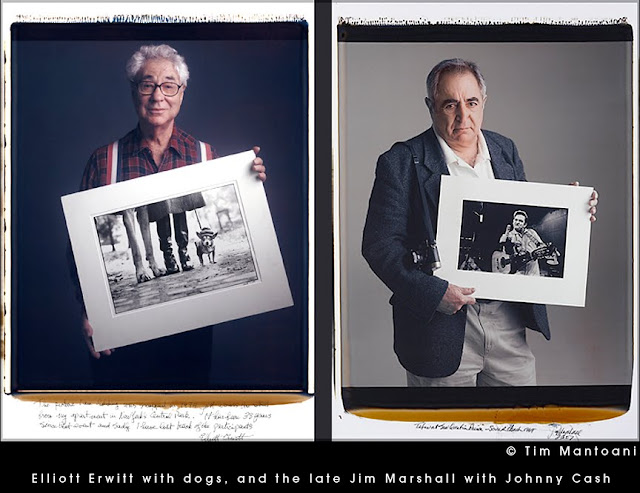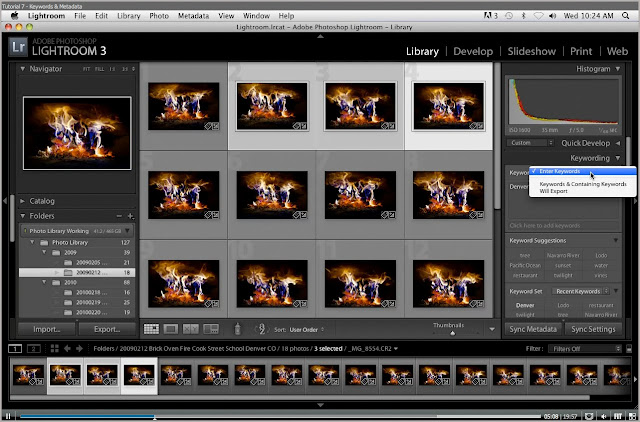Howlin' Wolf, Muddy Waters, Sonny Boy Williamson II...what better reason to take a road trip from Memphis to New Orleans along Highway 61?
And then, there's Ernest C. Withers.
On Christmas Day, 1954, an inebriated young singer named John Marshall Alexander Jr. took a break between sets at the City Auditorium in Houston, Texas, and played a game of Russian roulette, pulling the trigger on a revolver—first on his girlfriend, Olivia Gibbs, then on her friend, Mary Carter. The gun failed to go off. The third time, when he pointed the gun at himself, the hammer finally fell on a bullet in the chamber, killing Alexander—a.k.a. "Johnny Ace"—instantly.
"Big Mama" Thornton was a witness to Ace's death, but the name of the witness on his death certificate when Ace was buried on Jan. 2, 1955 was Ernest C. Withers. It would be almost a year before Rosa Parks would disobey bus driver James Blake on Dec. 1, 1955, and refuse to make room for a white passenger. Those were different times than our own, but not less violent.
In the late spring of 2004, I was wandering down Beale Street in Memphis when I happened to look above a door and notice a faded, torn piece of paper that had the words "Ernest C. Withers, photographer," scrawled on it. I had just purchased a postcard in a curio store with a photo of B.B. King's first touring band, taken in 1955, and something made me pull it from my back pocket and turn it over. When I saw the credit to "Ernest C. Withers," the hair stood up on the back of my neck. An hour later, my life changed forever.
I walked back to my room at the Peabody Hotel and dialed the almost illegible phone number on the scrap of paper, and a crusty old voice answered. Half an hour later, a big old sedan pulled up on Beale Street and Ernest slid out and unlocked the front door to the building. As we shuffled down a dark corridor to his studio, I could just make out above the door a large print of a black man standing in front of a 1950 Ford "Woodie," holding a Speed Graphic at his side. It was Ernest. Stacks of his old prints were everywhere, and as I stood looking at them I had a sense for the first time of the importance of history. The photographs of that time have a different "look," and an immediacy that is forever—the images almost literally burn themselves into our consciousness. Joe Rosenthal used a Speed Graphic at Iwo Jima and the last Pulitzer Prize-winning photograph taken with a Speed Graphic was Yasushi Nagao's 1961 image of Otoya Yamaguchi assassinating Inejiro Asanuma on stage.
Looking at print after print of Martin Luther King Jr., Tina Turner, black baseball players, civil rights riots, Isaac Hayes, Elvis, and a few whose faces I didn't recognize, I knew I was in the presence of a genius, of someone who understood the "big picture" of life, and who had recorded it day by day as a journeyman. If there was nothing else, no writing, no first person accounts, there was this—thousands and thousands of images that chronicled the life and times of a city in the Deep South that was at the epicenter of blues music and of the civil rights struggle.
As we left Ernest's studio, he offered to drive me back and I hesitated. He had a new title, "octogenarian," and I didn't want to trouble him, but the twinkle in his eye told me he would have none of it. A few minutes later, we were lumbering down Beale Street, with Ernest calling out the names and significance of each and every "landmark." "Well, now over there's where I first photographed Dr. King in the Greyhound bus station…" An hour earlier, I hadn't given any thought to Memphis' history, and now I was getting a private, guided tour from someone who knew the name of each and every person in each and every photograph he had ever taken.
Slowly we cruised the streets, finally ending back at the Peabody. I invited Ernest to dinner, and later that night I struggled to take notes as he gave me a synopsis of his life as a photographer in Memphis. In three hours he went from Howlin' Wolf, to King, to the Negro Baseball League, his job as a photographer stationed in Saipan during World War II, his job as a cop in Memphis (appointed in 1949 by his nemesis, political legend and former Memphis mayor E. H. "Boss" Crump), getting paid $35 a week to cover the Emmett Till trial for theTri-State Defender, Count Basie, the chitlin' circuit, the Little Rock "Nine"…. My notes from that night say, "Ernest is a walking Forrest Gump, who seems to have photographed everything in the Forties, Fifties, Sixties and Seventies, from Little Rock to Chicago, to the Delta…he is a walking encyclopedia, a classic." Occasionally Ernest would interrupt his flow of words to drop a bombshell of a non sequitur. Gazing up from the table in the midst of a sentence filled with names and dates, he looked at the windows of the Peabody and let on that "…my momma made those curtains…sewed them by hand." As he left that evening, I didn't know what to say, and for some reason I asked him, "what kind of film do you shoot?" He reached in his pocket, and pulled out a 35mm cartridge. Printed on the side in bold letters was "Walgreens".
The word "hyperbole" does not apply either to the life or to the life or the work of the photographer Ernest C. Withers, for in a career which staggers the imagination, he amassed more that five million negatives. Picking up a camera discarded by a sister's boyfriend, Withers began one of the most remarkable careers in journalism while still in high school, yet somehow found time to raise a daughter and seven sons.
Withers traveled up and down Highway 61 in the Deep South, photographing everything from the civil rights actions to the Memphis blues scene. Of his civil rights photography, Withers is best known for his iconic "I Am a Man" image, taken during the sanitation workers strike that started in Memphis in February of 1968, which drew national attention including the support of Rev. Martin Luther King who visited Memphis a month later.
Withers provided other services to the profession. In the days before photojournalists created "pools" to share photographs Ernest developed his own procedure. White photographers couldn't cover some of the predominantly black civil rights demonstrations so, using several cameras, Ernst would sell them his extra rolls of exposed, but undeveloped, film of the event. The pictures would then appear in publications— probably in some newspapers that would never hire a black photographer—with the credit line of the photographer who got their film from Ernest.
Perhaps the most compelling images Withers made are those of the people of Memphis, his hometown, where he maintained a studio on historic Beale Street until he passed away this October at the age of 85. Like many visionaries, Withers saw something few did, and his portraits of faith healers, tent cities and striking sanitation workers have recently enjoyed a revival. If these images were not enough, what was equally impressive was his attention to detail – every image had a story behind it, many of which Withers told in his occasional lectures to college audiences.
But one of Withers' most telling achievements was to self-publish a booklet of photographs of the Emmett Till trial (which many historians point to as the spark that ignited the civil rights movement) which he sold for $1 each. Ernest was aware of the revolution that was taking place, and he had assigned himself as its historian. Today, only one original of that incredible document remains in existence. Withers died on October 15, 2007. Withers disappeared off the map in the Nineties, but his career and images were revived largely through the work of Tony Decaneas, who began organizing and printing Withers' vast archive as well as selling prints at the Panopticon Gallery in Boston. And the writer Daniel Wolff organized Withers' work into two books—Pictures Tell the Story and Memphis Blues Again—writing thoughtful introductions that put Withers' images in the context of the times and that give the images the attention they deserve.
This brings me back to that road trip out on Highway 61. On March 22, 1965, Bob Dylan's album Bringing It All Back Home, was released. On the song "Outlaw Blues," Dylan talks about it being "...nine below zero and three o'clock in the afternoon," a reference to the song of that name by harmonica virtuoso Sonny Boy Williamson II, who died just two months later on May 25, 1965.
If you stop at actor Morgan Freeman's small restaurant Madidi in Clarksdale, Mississippi for some wonderful southern cooking, then continue on to the small town of Tutwiler, and then on the outskirts go straight down Prairie Place for about 1/2 mile, and walk into the weeds, you'll come across Sonny Boy's grave, which usually has several harmonicas and flowers placed on it: Sonny Boy Williamson's Grave.


























